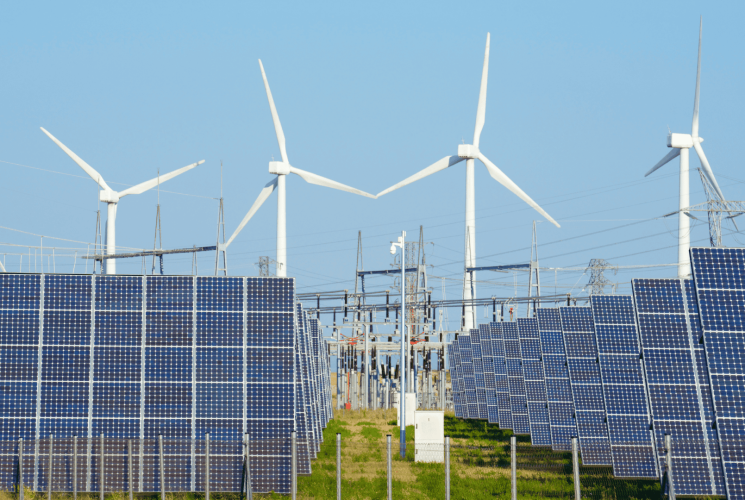How The UK Government is Fast-Tracking Wind Energy with £300M Investment

The Prime Minister has accelerated development of offshore wind turbines by announcing a £300 million investment - are the impacts worth such vast levels of government spending?
On April 24, 2025, Prime Minister Kier Starmer pledged £300 million of finance to the offshore wind sector, an investment that has the intent to expedite the transition from pollutants (fossil fuels) to clean and renewable energy sources, and ultimately lead to a reduced carbon footprint.
Furthermore, it’s anticipated that this funding will lead to faster planning approvals and construction times (reducing bureaucratic delays) in order to align with the country’s 2050 net zero goals.
The Development Process of Offshore Wind Turbine Projects
Feasibility - Offshore wind farms require extensive levels of research to assess the viability of the construction projects, as the installations can be very complex. For example: assessing wind speeds, sea conditions, and determining whether a grid connection can be achieved.
Planning Permission - After assessment measures, lengthy planning applications occur which can take several years. This is due to environmental concern and opposition, such as complaints of ruining views or shipping lanes. Overall there are many different factors to consider before approval.
Construction - The manufacturing and movement of turbines out to sea requires supporting infrastructure which is expensive. Therefore, with the proposed funding, developers will be able to access resources to increase the efficiency of the construction process.
Maintenance - After offshore installation, there must be a grid connection to transport energy back to land, and this connection must be monitored to make sure the turbines are running at their maximum potential during their 30 year lifespan.
Costs of Offshore Wind Turbine Projects
Wind turbine development is capital intensive and involves high initial costs in manufacturing, then in installation, and in grid connection. Ongoing costs include, for example, maintenance and insurance. Regardless, offshore wind has the potential to reduce electricity prices over time due to its renewable element, and the £300 million is likely to improve accessibility for developers.
Opportunity costs must also be considered as the funds could address other sectors like healthcare or education, yet the long term incentives make the government investment look promising in building a sustainable future.
+ Advantages
-
Clean and renewable to decarbonise energy, improving the UK’s net zero goal.
-
Energy independence as energy becomes more domestic and less reliant on fossil fuel imports.
- Job creation in construction and operational processes will reduce unemployment, leading to lower government costs.
- Technological innovation is likely to take place because of funding, improving the effectiveness of future wind turbines.
- Disadvantages
-
Substantial initial costs mean that many developers are discouraged from investing in the wind sector.
-
Potential environmental damage during the construction phase that may damage marine ecosystems.
- Current UK grid infrastructure can’t deal with high intakes of renewable energy and developing new is costly and labour intensive.
- Sea conditions can lead to damage and can result in high maintenance fees and less reliability.
All factors considered, the £300 million funding to the offshore wind sector has one clear aim: to fast track the UK’s transition to renewable energy.
Recent news and views
How to Build A Development Team in the USA
Build a strong development team with the right skills, culture, and strategy. Learn how US renewable recruitment works and how to attract, hire, and retain top talent in a competitive market.

Sustainability in Transition: A Changing Market, a Crowded Talent Pool, and the Value of Specialist Recruitment
Over the past 12 months, the sustainability market has entered a new era. The job market surrounding it has become more complex, competitive and in many cases, challenging to navigate for both employers and candidates.

El rompecabezas de la energía renovable en España
El apagón de 2025 en España mostró que el reto está en la infraestructura, no en las renovables. Redes inteligentes, almacenamiento y flexibilidad serán claves para un futuro energético limpio y resiliente.

How to Build A Development Team in the USA
Build a strong development team with the right skills, culture, and strategy. Learn how US renewable recruitment works and how to attract, hire, and retain top talent in a competitive market.

Sustainability in Transition: A Changing Market, a Crowded Talent Pool, and the Value of Specialist Recruitment
Over the past 12 months, the sustainability market has entered a new era. The job market surrounding it has become more complex, competitive and in many cases, challenging to navigate for both employers and candidates.

El rompecabezas de la energía renovable en España
El apagón de 2025 en España mostró que el reto está en la infraestructura, no en las renovables. Redes inteligentes, almacenamiento y flexibilidad serán claves para un futuro energético limpio y resiliente.

Sign up to our newsletter
Jobs, insights, resources and more. A monthly update, straight to your inbox.





